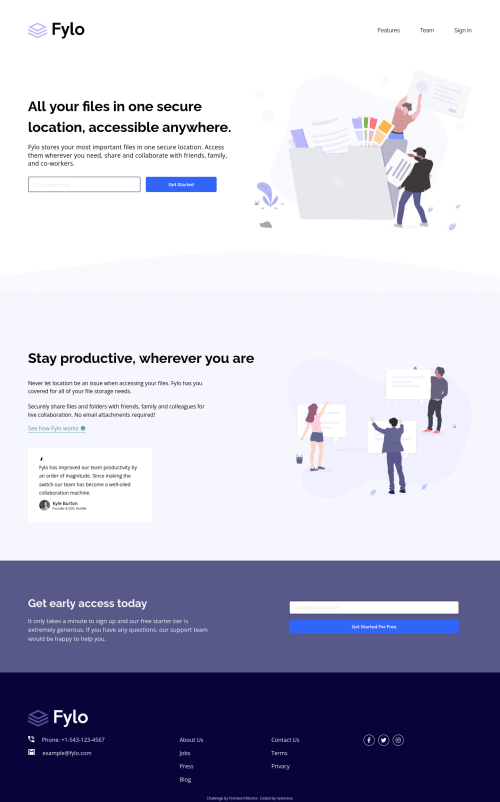Fylo landing page with two column layout

Solution retrospective
This is a good junior level challenge to practice on. I challenged myself to knock this out in a day(8hrs). That didn't happen! I noticed that I end up having to go back to the markup to add complexity due to needs. My challenges start with me jumping straight into the IDE and that leads me to too many revisions. On the scale of complexity I feel pretty close to the bottom here and I can imagine the time saved will add up.
I want to work toward being able to develop something like this within a day. Going forward I'm going to practice pseudo coding to develop better structure from the beginning. I hope to better identify issues like, needing a container or best properties for the use case.
As always feedback is welcome! Thanks for checking this out.
Please log in to post a comment
Log in with GitHubCommunity feedback
No feedback yet. Be the first to give feedback on James's solution.
Join our Discord community
Join thousands of Frontend Mentor community members taking the challenges, sharing resources, helping each other, and chatting about all things front-end!
Join our Discord